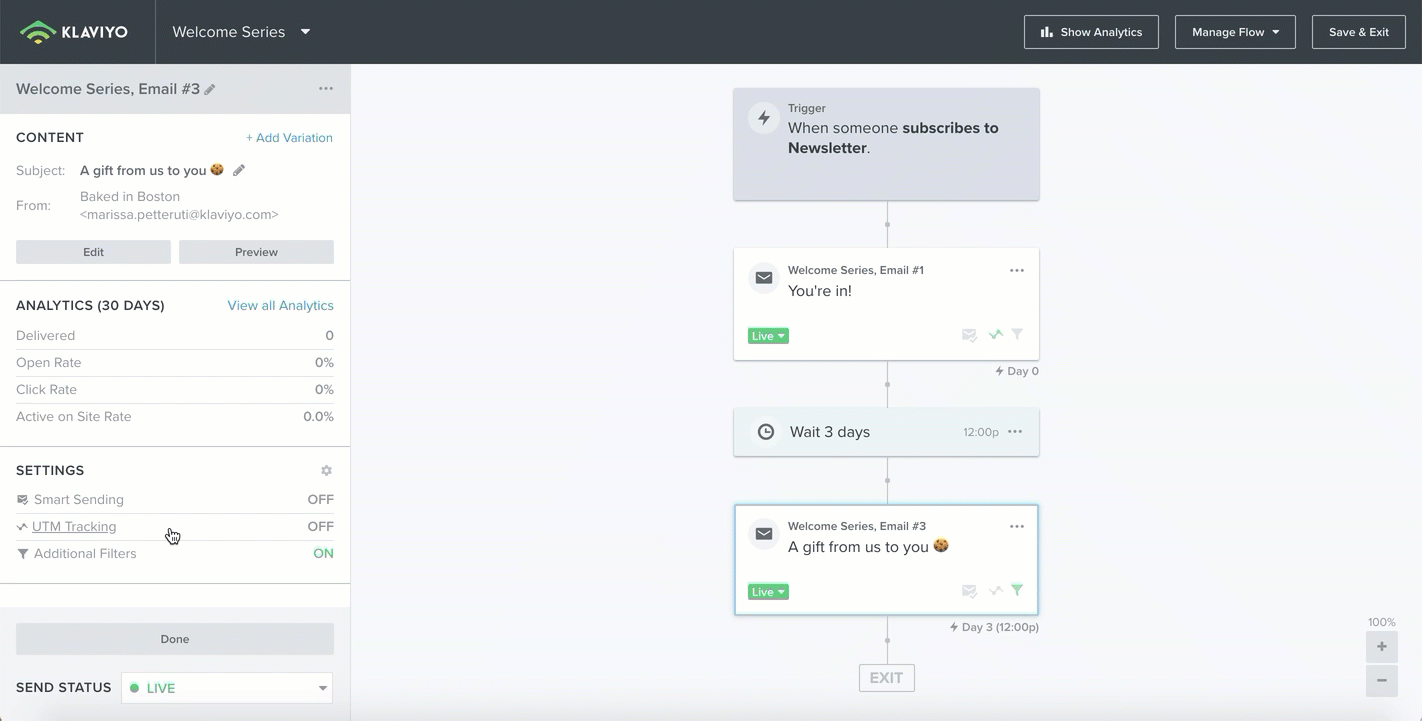You’ve Got Mail
Why email can be a brand's most profitable tool, if used properly.

You’ve Got Mail
5 min read
Brand strategy
Words by Nicole Wong
Experts have said for years that email is dead due to the rise of social media but lo and behold, email has revived from the dead. It’s even become the largest revenue driver of direct to consumer brands.
We get bombarded by emails everyday. Unless you’re one of those who cannot bear to see more than one unread message in your inbox, chances are, you have hundreds if not thousands of unread emails all sent from brands that you’ve expressed interest in. Gmail has done us a favor by helping us group all shopping related emails under the “promotions” tab, where we have our own ‘personal shopping mall’ with all of our favorite brands in one place. A scroll through the tab is a battle between the copywriters — who writes the wittiest copy that catches attention at the first glance amongst all the other emails.
The pandemic has exacerbated email direct marketing (eDMs) because brands were forced to pivot to digital, but many didn’t understand the fine line between prompting consumers to interact and spamming them. Open rate of emails had increased by 13% during the pandemic – many brands mistook this as an opportunity to send them more emails. They were sending one to two email blasts per week, with no real understanding of how the people within that list are engaging with them. Bombas was under fire recently for sending too many emails to their customers with 24 emails sent within a 65 day period, all of which were either product or sales based, vigorously (and annoyingly) pushing customers to purchase. The constant selling and spamming of emails may lead customers who are initially interested in buying socks from Bombas to question the brand’s integrity. When it comes to marketing, brands can be very self centered, where they create content based on what the brand wants the customers to know, rather than telling the stories that customers truly care about. They often act based on their business objectives and KPI, rather than acting with customers’ needs and preferences in mind.

Brands like Glossier have become the leaders in building communities and a two way dialogue with their audience.
It doesn’t get more personal than emails. Unlike other digital channels, email is an opt in channel where customers initiate a proactive relationship with brands. Customers took the time to enter their emails or select that tick to confirm that they are indeed interested in hearing from the brand. Therefore, a brand’s email list is a valuable asset that should be safely guarded. Email is a great way for brands to build an emotional bond with their audience. In the early physical retail days, shopkeepers who greet customers by first names or their ability to recommend relevant products based on their understanding of them make customers feel special. However, with the development data in the digital age, customers now expect hyper-personalization. And that’s far beyond relevant ads or products that they might be interested in. They want to be served the right message, at the right time.
It’s a culmination of many, sometimes dozens of interactions with the brand at multiple touchpoints along the customer journey before they successfully convert.
Social media platforms like Facebook have made it easy for brands to serve relevant ads to narrow audiences, however it’s no longer the ‘secret sauce to conversion’. Conversion is not a one time interaction that a customer has with the brand that leads to a purchase decision. It’s a culmination of many, sometimes dozens of interactions with the brand at multiple touchpoints along the customer journey before they successfully convert. Each interaction might move the pin a little, but most of the time, one interaction is not enough. Hence, brand building plays a more important role in long term conversion than quick win campaigns. Successful brands create content that has a strong visual and emotional impact on customers, driving repeated purchase and brand loyalty. Which is why even though the process of building a brand can be expensive and time consuming, it is worth every penny in the long term. After building a solid brand, a key way to strengthen the relationship between the brand and customers is to harness the power of eDMs by serving dynamic emails based on each customer’s unique behaviour online. This allows you to continuously engage them throughout their customer journey or re-engage the inactive ones. eDM tools such as Klayvio or Mail Chimp have made it easy for marketers to generate customer journey flows – “automated routes that consist of different interactions a contact will trigger as they move through it, carving out their own unique path (based on what they do or don’t do along the way)”. When used in tandem with targeted social media communication and ads, eDMs can effectively nudge customers towards conversion.

Another key reason why it is important to understand the fine line between prompting interaction and spamming customers with email is the ease of unsubscribing. Many are hesitant about eDMs because once a customer unsubscribes, not only are brands unable to send them any more communication, it’s very difficult to get them to re-subscribe. However, the ability to unsubscribe also means that brands are not wasting money targeting customers that don’t want to hear from them, improving cost and efficiency. To further increase eDM efficiency brands should also consider split tests. Seasoned brands will know to A/B test ads, but many forget or neglect to A/B test emails: A surprising 39% of brands don’t test their broadcast or segmented emails. Minute changes can make a huge difference. A/B testing items such as pop up location, timing, design, copy, call to action allow brands to optimize and maximize performance by ensuring that all messaging and design of emails are relevant to its audience — prompting them to engage. Through ensuring communication relevance to customers, A/B testing can in turn reduce the chances of un-subscriptions.
Email campaigns don’t have to be annoying. Successful eDMs bring customers happiness and excitement. Rather than just another unread email sitting in an inbox. The key to effective eDM is building meaningful relationships with each customer through a deep understanding of their unique actions, preferences and needs at a respectful distance.
Next
When Watchers Become Directors
July, 2021.
